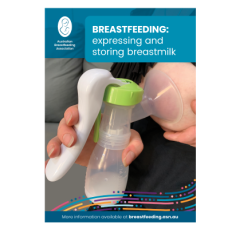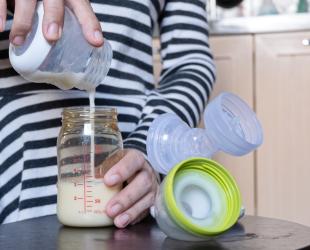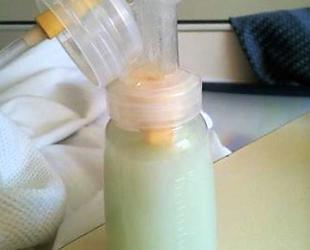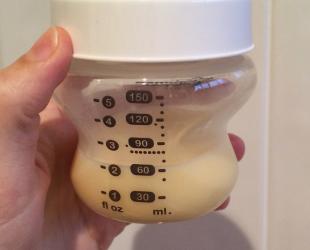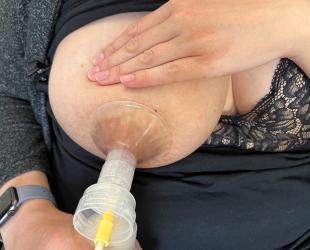Safe storage tips for your expressed breastmilk—at home or on the go
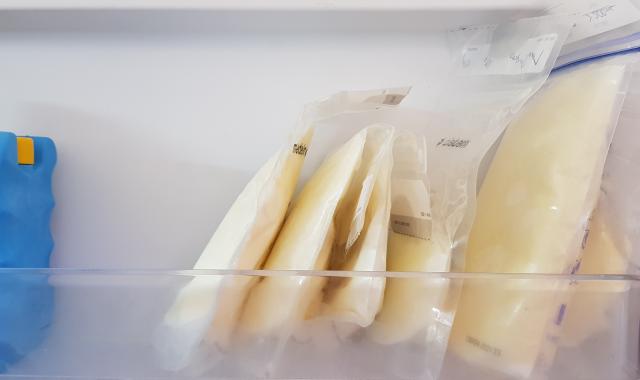
Expressed breastmilk needs to be stored correctly to keep it safe and nutritious for your baby. By following a few simple steps, you can make sure your milk stays fresh, whether you’re using it later that day or freezing it for the future.
Choosing a container
Before choosing a storage container for your expressed breastmilk, think about how you’ll be using it. Will you be freezing the milk, storing it in your work fridge, taking it with you or using it the same day?
Choose containers that are food grade, BPA-free and suitable for freezing, if needed. Good options include:
- baby-feeding bottles
- plastic or glass containers with tight-fitting lids
- zip-lock bags.
If your baby is in hospital, check with the staff to see if the hospital provides containers or has specific requirements for storage.
Storing breastmilk
Seal your container of expressed breastmilk (EBM) and label it clearly with the date. Store it at the back of the fridge or freezer, away from the door, where it stays coldest.
If you want to add freshly expressed milk to milk that’s already chilled or frozen, cool the new milk in the fridge first. Once it’s cold, you can add it to the existing milk, then return the container straight to the fridge or freezer.
Breastmilk storage guidelines
Breastmilk | Room temperature(26°C or lower) | Refrigerator(5°C or lower) | Freezer |
|---|---|---|---|
| Freshly expressed into container | 6 to 8 hours If refrigeration is available, store milk there | No more than 72 hours Store at the back, where it is coldest | 2 weeks in freezer compartment inside refrigerator (-15°C) 3 months in freezer section of refrigerator with separate door (-18°C) 6 to 12 months in deep freeze (-20°C*) |
| Previously frozen - thawed in refrigerator but not yet warmed | 4 hours or less (ie the next feeding) | Store in refrigerator 24 hours | Do not refreeze |
| Thawed outside refrigerator in warm water | For completion of feeding | Hold for 4 hours or until next feeding | Do not refreeze |
| Baby has begun feeding | Only for completion of feeding, then discard | Discard | Discard |
*Chest / upright manual defrost deep freezer that is opened infrequently and keeps temperature.
Reproduced with permission from the National Health and Medical Research Council (NHMRC) Infant Feeding Guidelines (2012).
Cool freshly expressed breastmilk in the fridge before adding it to other chilled or frozen expressed breastmilk.
Safety information about storing expressed breastmilk
- Only freeze or heat breastmilk once—don’t refreeze or reheat it after it’s been thawed or warmed.
- Offer small amounts of breastmilk at a time to avoid waste, as any milk left after a feed needs to be thrown away. If your baby needs more, simply prepare another small amount.
- Always clean storage containers thoroughly before use.
- If your baby is premature or unwell, talk to your doctor or midwife about any extra steps you might need to take. For sick babies, fresh breastmilk each day is best.
Transporting breastmilk
- If you need to take expressed breastmilk (EBM) with you, consider the weather and how long you’ll be travelling.
- In cooler weather or for short trips, you may not need to do anything special. On warm days or for longer journeys, keep your milk cool in an insulated bag.
- If frozen milk thaws during transport, use it within 24 hours and don’t refreeze it.
© Australian Breastfeeding Association November 2025
Read more about expressing and storing
Evidence-led info and practical tips from our Breastfeeding Information Series
Breastfeeding: expressing and storing breastmilk
